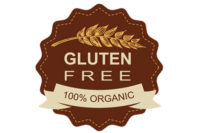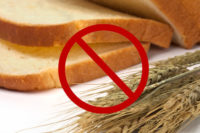Positive and negative comments about specific companies and products were included. Although many survey participants indicated that the overall quality of gluten-free breads and baked products have improved dramatically over the years, most feel there is still lots of room for improvement. Here are some common themes:
Taste, texture and overall quality of gluten-free baked goods
Most breads still need to be toasted to improve palatability.
Bread slices are too small.
Products have a bland flavor, aftertaste and cottony texture, are dry and go stale quickly.
Some participants said they bake their own gluten-free products because the taste is superior to that of store-bought products.
Gluten-free products are too expensive.
Some people said they are concerned about the safety of products due to cross-contamination, especially in facilities that manufacture both gluten-free and gluten-containing items.
Nutritional quality of gluten-free baked goods
Many respondents said they don’t purchase products and depend on naturally gluten-free foods such as meats, fish, poultry, nuts, seeds, legumes, fruits, vegetables and dairy products to ensure adequate nutrition.
Some people said they are very disappointed in the nutritional quality of gluten-free products.
Gluten-free products lack of fiber and whole grains.
Gluten-free products are too high in carbohydrates, refined flours and starches.
Gluten-free products contain empty calories.
Most products are not enriched with iron and B vitamins, like gluten-containing products.
Some consumers feel these products contain too many preservatives.
Some survey participants said they don’t want corn.
Some consumers said more gluten-free oats, oat flour and oat bran should be used in products.
Consumers also shared their wish list of gluten-free items they feel are missing in the marketplace:
Breads
Larger; normal size; softer, not like cardboard; fresh, not frozen.
Whole-grain and high-fiber bread.
Ancient-grain breads.
Multigrain, crusty, fresh bread.
Multigrain, par-baked bread that can be baked at home.
French, sourdough, dark pumper-nickel, focaccia, naan and pita.
Other baked products
Baguettes, croissants, crumpets, breadsticks, English muffins, crescent rolls and soft buns.
Healthy muffins, not like cake.
Softer, thicker pizza crusts.
Softer, better-tasting tortillas that do not crack and wrap properly.
Danish, cream puffs, cinnamon rolls, phyllo dough, pop tarts and other pastries.
Large, soft pretzels.
Miscellaneous comments
More individually wrapped, travel-size and single-serve items, such as muffins, bread and hamburger and hot dog buns.
Gluten-free sandwiches or bagels at regular sandwich shops.
Fewer sweet items and more healthy bread and cereal options.
So it is clear that gluten-free consumers want higher quality and more nutritious gluten-free products. The challenge is for research and product development teams to get back to their labs and improve the overall quality and types of gluten-free products on the market today!
Shelley Case, RD, is a registered dietitian and leading international expert on Celiac disease and the gluten-free diet. Case is also a member of the Medical Advisory Boards of the Celiac Disease Foundation, Gluten Intolerance Group and Canadian Celiac Association and the Scientific Advisory Board of the Grain Foods Foundation. She also has a national best-selling book, Gluten-Free Diet: A Comprehensive Resource Guide. Visit www.glutenfreediet.ca for more information.




